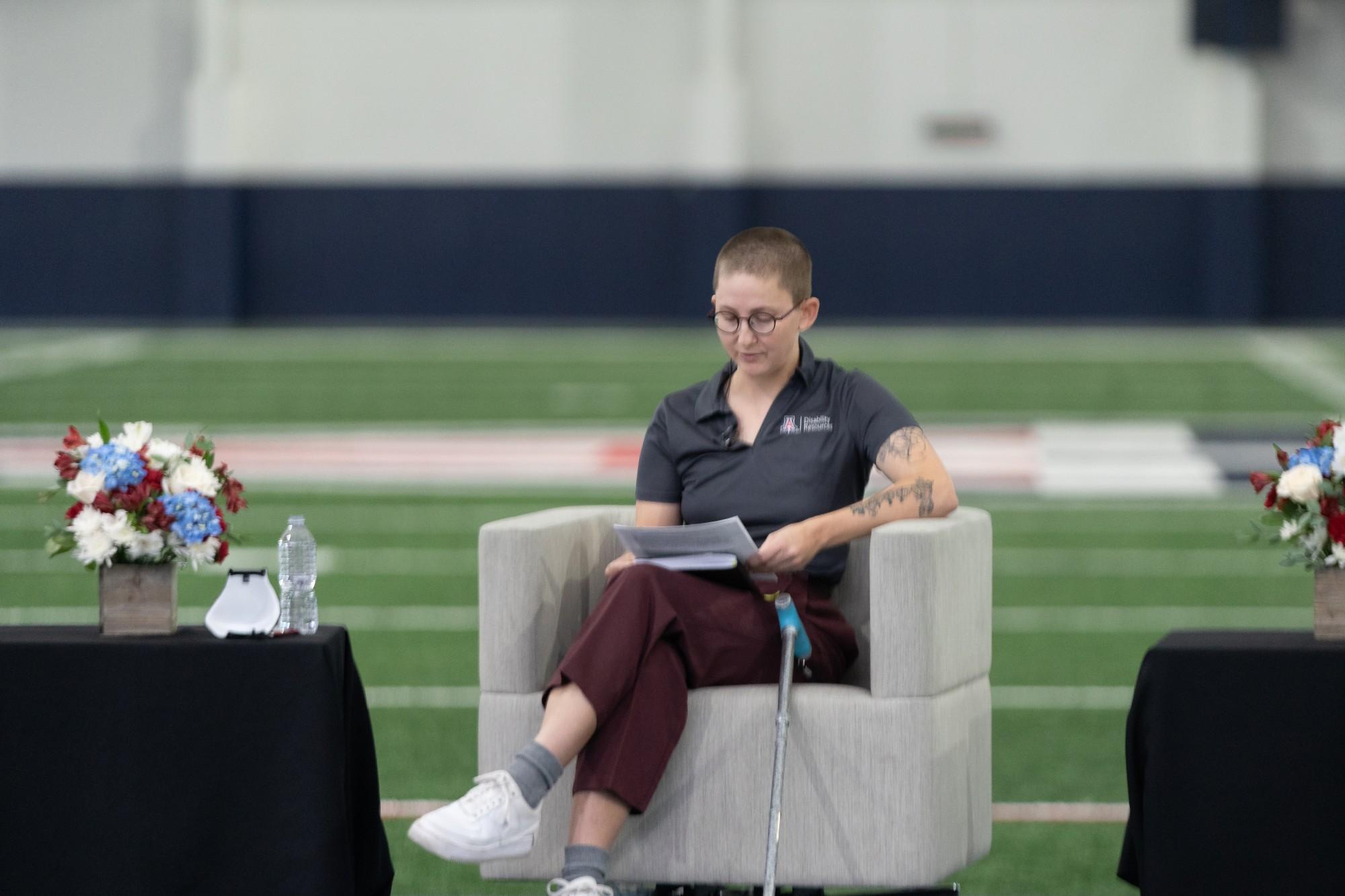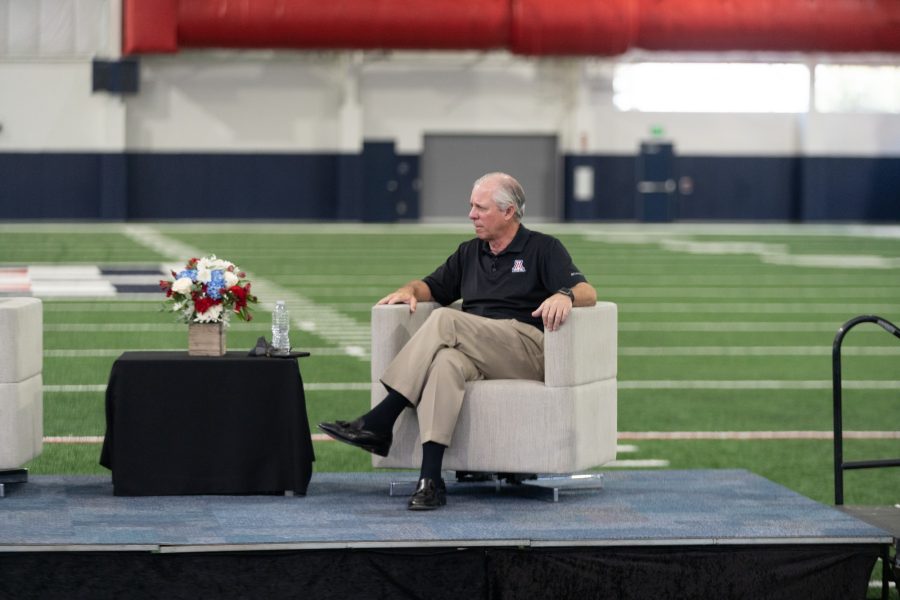Student leaders within the University of Arizona Reentry Task Force met alongside President Dr. Robert C. Robbins and task force director Dr. Richard Carmona Thursday at a press conference to provide a student perspective of campus reentry.
These student representatives are Anthony Rusk from the Arizona Board of Regents, Courtney Halsey from Veterans Education & Transition Services, Sav Schlauderaff from the Disability Resource Center and Timothy Gustafson, chief of the UA’s Emergency Medical Services.
“None of this reentry could be possible unless we have buy-in and incredible engagement by the students,” Robbins said.
RELATED: Campus reentry update: Task force talks combating the spread of COVID-19 on campus
In previous task force meetings, members of the media had asked how administration will persuade students to engage in social-distancing and other precautionary measures outside the campus borders, with the answer being it would come down to students in leadership positions setting examples for their peers. Such student leaders had the opportunity to answer that question for themselves at the panel.
“In terms of creating a culture for what the new normal looks like, … our student leaders need to be making the cultural push to be having their friends and their students follow the guidelines that we have,” Rusk said.
The students on the panel also brought up various considerations about reopening campus from the perspective of the groups they represent.
Halsey said there were concerns from Veterans Education & Transition Services about how different course structures would affect using the GI Bill and how they will use their center with social distancing procedures.
“Basically our students just want to know basic guidelines,” Halsey said. “I know we have such a short timeline to get these guidelines and policies in place, but I think the sooner the better.”
Schlauderaff spoke on multiple concerns from the Disability Resource Center on the safety of students with disabilities and equal access to college learning regardless of whether one decides to return for in-person sessions or not.

“I myself as a chronically ill and disabled student and university employee will continue working and studying from home despite any calls for reentry onto campus,” Schlauderaff said. “How can we ensure there is no retaliation for those who continue to work or take classes from home?”
Schlauderaff said they would like more clarity on what “flexible options” means for students, faculty and staff unable to return to campus. They said the Disability Cultural Center was advocating for universal course designs for equal accessibility for all.
Additional concerns included any possibility of budget cuts for cultural and resource centers on campus, potential location of a testing site at campus health and its close proximity to the DCC and the overall safety of students attending in-person courses.
“We want to emphatically remind everybody that it is not just elderly individuals that are at risk of contracting COVID-19,” Schlauderaff said, citing the disproportionately high rate of black and Hispanic people who have suffered complications from the virus, as well as immunocompromised, disabled and chronically ill individuals.
Robbins said nearly everything the students on the panel brought up would be addressed in future policy decisions. He said the final decision on reopening the campus will likely come late July.
“We’ll make a decision based on the hundreds and hundreds of hours of work that so many dedicated staff, faculty from the university have put into this process,” Robbins said.
Robbins also said they will have made more specific policy decisions about campus life and their pandemic procedures in the next few weeks.
RELATED: Fate of future George Floyd protests uncertain after Gov. Ducey announces state of emergency
Statements on UA George Floyd protests
Recent protests over the police killing of George Floyd, a black man from Minneapolis, were also briefly discussed.
“Obviously what’s been going on in this country in the last week is a movement that I think finally is going to bring about some changes that are led by young people,” Robbins said. “I’m happy that we’ve had two very large gatherings on our campus. … There’s another event on Friday night and another on Saturday.”
Schlauderaff also shouted out Wednesday evening’s rally on the UA campus and the “black students and youth” who led it.
“I urge that we continue to center and listen to these students moving forward with any demands or guidance that they might put forward,” Schlauderaff said.
To watch the full press conference, visit the UA’s YouTube channel. The next update is scheduled for Thursday, June 11 at 10 a.m. and will be livestreamed on both Facebook and YouTube.
Follow Sam Burdette on Twitter









